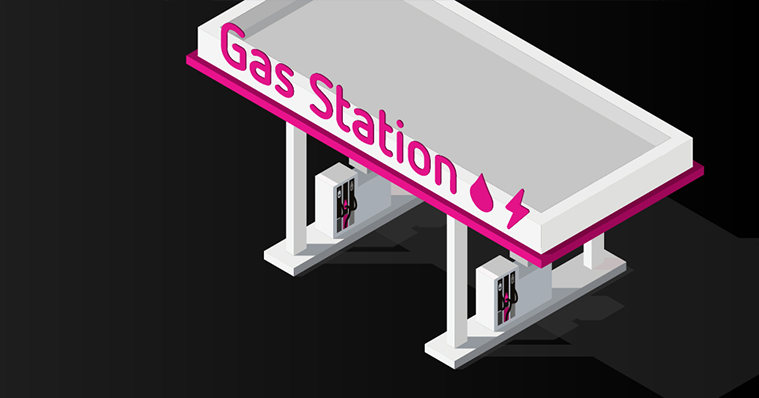
Germany currently has around 14,500 gas stations. But there were almost 20,000 of these in the 1980s. And in the 1970s, the count was about 46,000. 1 The trend is clear and the conclusion inevitable: gas stations in the shape and form we know them will be virtually redundant in years to come. ‘Charging units, not pumps’ is the watchword, and the smart advice is to be making the switch already. But that said, this is a move that needs to be thought through.
Even in 2019, the Süddeutsche Zeitung was writing that ‘The petroleum age looks to be nearing its end.’ Now, two years on, any doubt has gone – and action is imperative. Future mobility will be strongly driven by factors like the growing public and political importance of environmental protection, tax benefits, EU carbon emission reduction regulations and, not least, the growing eMobility market itself. By the end of the year, the number of registered vehicles running purely on battery power in Europe will hit the one million mark – and perhaps even surpass it. All this means only one thing for gas station operators: future demand for a comprehensive charging infrastructure will be so great that existing gas stations will have to meet it.
Numerous possibilities...but the core message is clear
“The future for gas stations will be as varied as the number of ways we get around,”
reads the 2022 Mobility Report published by the Zukunftsinstitut (Future Institute). The report sketches out four possible scenarios of how that future might look. In one of them, the ‘Gas Station 2.0’, located in rural areas or on the edges of cities, will have only the occasional charge point. After all, internal combustion technology will coexist with innovative drive systems for a long time to come – until the switch to complete electrification is complete. Another scenario sees gas stations as ‘mobility hubs’ offering a variety of mobility services in their role as busy junctions. Apart from being able to charge, EV drivers also expect the full range of additional services to be available while they wait for charging to complete – everything from freshly prepared food to groceries to lockers where they can pick up online orders. This will allow them to make good use of their charging time.
Opportunities for gas station operators
But what are the opportunities for gas station operators? Most important is the chance to position the business as sustainable, modern, and visionary. Apart from that, any services involving synergies with the existing core trio of shop/bistro, refueling/charging and vehicle services are a major opportunity for anyone running a gas station. Flexible opening times or on-site staff, which are typical features of gas stations, are a further plus in this context. Gas stations are in a position to play to their three big strengths at Point of Sale: their locations, their established brands and the high visibility of those brands. Then there’s the existing customer body, which is already a large one thanks to existing services and products for fleets, such as fuel cards. And it’s relatively easy to integrate these customers, for example by adding charging cards to your product portfolio.
What are the challenges?
Along with the opportunities, however, gas station operators also have challenges to overcome when they expand or switch to EV Charging. A few considerations in this regard:
- A considered rollout strategy is important. And investments in the infrastructure should also be planned in line with current demand and dropping technology prices.
- Operating the infrastructure must be cost-efficient and profitable on both a small and a large scale.
- The limited availability of grid energy must be taken into account – contact with energy providers should be made well in advance.
- A workable IT system integration must be considered.
- Give some thought to the compatibility of both hardware and software. The be.ENERGISED software by has·to·be gmbh offers all the functionality gas stations need for efficient infrastructure management over a wide geographic region covering multiple countries. These include automated billing processes, compatibility with third-party systems and flexible adaptations to any existing charging station model.
- Last but not least: Build up your knowledge and expertise in the EV Charging arena. External know-how can also be helpful here. A step-by-step market entry, involving various test runs, is a worthwhile option before restructuring your entire gas station network.
One certainty is this: future mobility is already here. Expanding the gas station business model is no longer just ‘nice to have’ but fundamental to the long-term survival of the entire gas station network.
